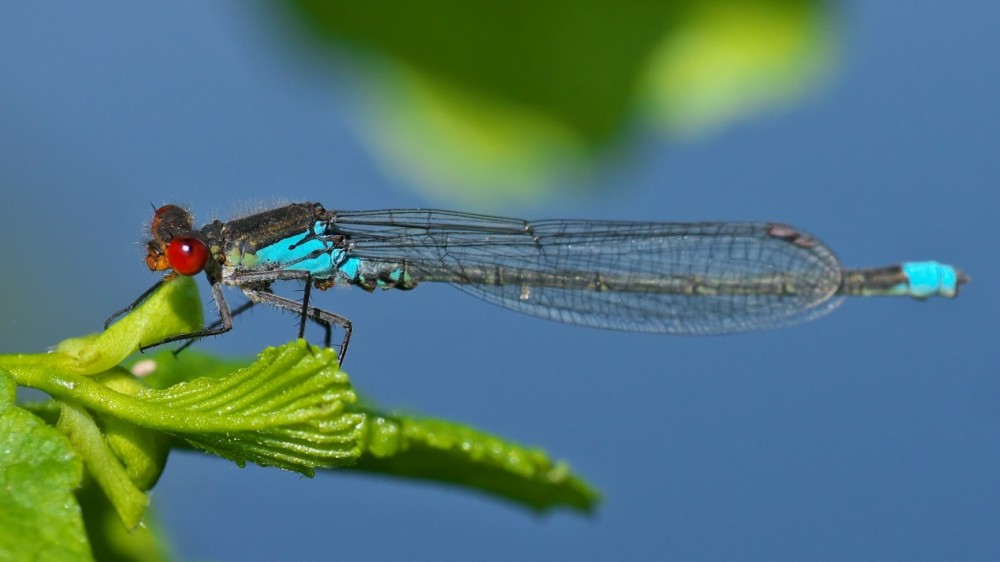Name
Erythromma najas (Hansemann, 1823)
Family:
Coenagrionidae
Status in Britain and Ireland:
locally common
Local Status:
local
Size:
Overall body length 30-36mm
Hindwing length 19-24mm
Flight period:
Mid May until mid August
Photograph © D. Williams
Male Red-eyed Damselfly
A rather stout damselfly easily identifiable by the red eyes. The body is all black apart from segments 1 and 9-10 which are blue. The top of the thorax is black and no antehumeral stripes are present. The thorax has blue sides with 2 black lines, the upper of which is a short spur. The wings are clear with a pale brown pterostigma. The legs are black.
Photograph © B. Kemp
Female Red-eyed Damselfly
The body is all black with narrow blue rings between segments 8-9 and 9-10. The dorsal face of the thorax is black with much reduced yellow antehumeral stripes which can resemble an exclamation mark. The thorax sides are yellow green. The eyes are reddish brown. The trailing edge of the pronotum has 3 distinct lobes.
Similar Species
Blue-tailed Damselfly and Scarce Blue-tailed Damselfly males are similar due to blue colouration at the end of the abdomen but these species are far less robust and do not have red eyes. In addition they have distinctive bicoloured pterostigma. Small Red-eyed Damselfly is very similar and though not yet recorded in Shropshire is expected to cross our borders soon! The male also has red eyes, but the blue colouration on the abdomen extends onto the sides of segment 2 from the thorax and onto segment 8 from segment 9. In addition a black X mark can be seen on the dorsal surface of segment 10. When at rest the wings extend just beyond the join between segments 6 and 7. The wings of the Red-eyed Damselfly extend further down the abdomen.
Behaviour
Territorial males are often seen perched on a lily leaf from where they fly out over the water and then return. Oviposition is completed in tandem with the pair descending down the stem of a water- lily to a depth of 50cm or more where eggs are inserted into the plant material. This can last for up to 30 minutes.
Habitat
Usually found on lakes and large ponds, canals and large ditches where there are large areas of floating vegetation, particularly water lilies.
Shropshire Distribution
Historic records were made at Whixall Moss in 1950 and Cole Mere in 1965. During the 1970’s there were sightings at a number of Shropshire meres including Blakemere, Shomere , Betton Pool and Fenemere and also the Prees Branch of the Shropshire Union Canal. The 1980’s brought records at Bomere and Montgomery Canal at Aston Locks. Lockton et al., (1996) classified this species as scarce in Shropshire and this has now been upgraded to local. The increase in records largely illustrates an infilling of areas already within the recorded range and the majority of records still lie in the central, northern and eastern areas of the county. There are however recent records in the Wyre Forest and in the west of the county on the Montgomery Canal at Redwith. Telford has also had a number of records at Telford Town Park though none specifically at Hinkshay Pools where this species was recorded in 1973.
Where to see in Shropshire
Montgomery Canal at Aston Locks, Cole Mere, Telford Town Park and Dudmaston.




